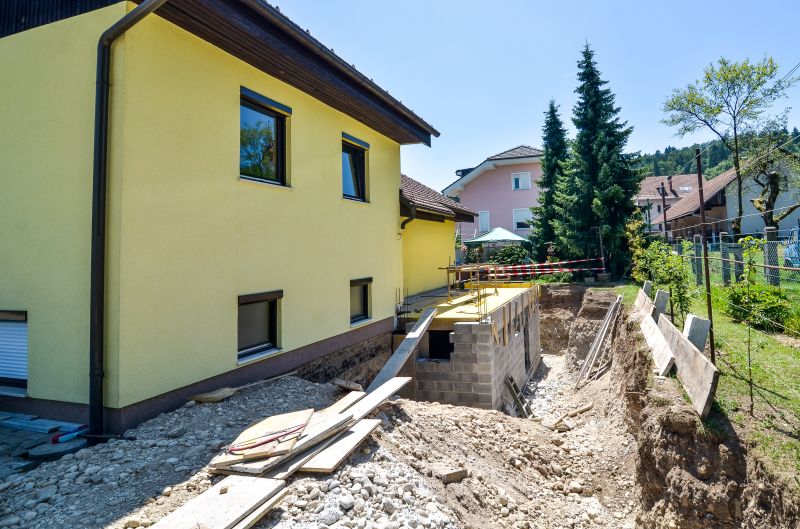Ultimate Foundation Repair Products For Restoring Structural Integrity
Explore comprehensive solutions and products that help repair and stabilize your foundation effectively.
 Foundation repairs are essential for maintaining the structural integrity of a building, especially in areas prone to soil movement, moisture fluctuations, or settling issues. When considering products for foundation repair, it is important to understand the variety of solutions available and how they address different types of foundation problems. From minor cracks to significant shifts, selecting the right products can help stabilize and reinforce a foundation effectively. Proper assessment by a professional is often recommended to determine the most suitable repair methods and products for specific conditions.
Foundation repairs are essential for maintaining the structural integrity of a building, especially in areas prone to soil movement, moisture fluctuations, or settling issues. When considering products for foundation repair, it is important to understand the variety of solutions available and how they address different types of foundation problems. From minor cracks to significant shifts, selecting the right products can help stabilize and reinforce a foundation effectively. Proper assessment by a professional is often recommended to determine the most suitable repair methods and products for specific conditions.
Top Overall Option
Polyurethane Injection Resin
Polyurethane injection resin is a versatile solution used to stabilize and lift sinking or cracked foundations. It expands upon application, filling voids and sealing cracks to prevent water intrusion and further deterioration. This product is often favored for its quick curing time and minimal disruption during installation, making it suitable for various foundation types and repair scopes.
Types of Products For Foundation Repairs
Carbon Fiber Reinforcement Strips
Used to reinforce cracked walls and prevent further movement, these strips are bonded to the surface for added strength.
Helical Piles
Deep foundation supports that are screwed into the ground to stabilize sinking structures and provide load-bearing support.
Mudjacking and Slab Jacking Materials
Materials used to lift and level sunken concrete slabs, often involving slurry mixtures that fill voids beneath slabs.
Epoxy Injection Kits
Designed to seal cracks and restore structural integrity by bonding damaged concrete sections.
Underpinning Piers and Push Piers
Support systems installed beneath foundations to transfer weight to stable soil or bedrock.
Soil Stabilization Products
Chemicals or grouts used to improve soil consistency and reduce shifting beneath foundations.
Waterproofing Membranes
Applied to foundation walls to prevent water infiltration and reduce moisture-related soil movement.
Grout and Injection Cement
Used to fill voids, cracks, and stabilize soil or concrete structures.
Foundation Bolts and Anchors
Hardware used to secure and reinforce existing foundation elements.
Polyurethane Foam
Lightweight foam used for void filling and minor lifting applications.
Steel Push Piers
Heavy-duty supports driven into the ground to lift and stabilize foundations.
Fiber Reinforced Polymer (FRP) Sheets
Materials used to reinforce and repair cracked or bowed walls.
Drainage Systems and Drain Tiles
Components designed to redirect water away from foundations, reducing soil moisture fluctuations.
Concrete Patching Compounds
Used to repair surface cracks and surface deterioration in concrete foundations.
Vapor Barriers
Installations to prevent moisture intrusion from the ground into foundation walls.
Soil Drying and Moisture Control Products
Solutions to manage soil moisture levels around foundations.
Popular Choices
A common choice for sealing cracks and filling voids with minimal disruption.
Widely used for reinforcing cracked walls and preventing further movement.
Frequently selected for deep foundation stabilization in various soil conditions.
Popular for leveling concrete slabs and restoring surface stability.
Often used for crack sealing and structural bonding in concrete foundations.
Preferred for lifting and stabilizing sinking foundations with deep support systems.
Commonly installed to prevent water intrusion and reduce foundation moisture issues.
Utilized for filling voids and stabilizing soil beneath foundations.
Chosen for their strength and durability in heavy load applications.
Popular for wall reinforcement and crack stabilization.
Effective in managing water flow around foundations for long-term stability.
Used for surface repairs to improve appearance and reduce further cracking.
In Terre Haute, Indiana, where soil types and weather patterns can influence foundation stability, choosing appropriate repair products is crucial. Homeowners and contractors alike should focus on quality, durability, and compatibility with existing structures. While some solutions are temporary, many products are designed for long-term stabilization, providing peace of mind and safety. Understanding the features, installation requirements, and limitations of various foundation repair products can help users make informed decisions that suit their specific needs.
Whether addressing minor cosmetic cracks or more serious foundation shifts, the right product can make a significant difference in the outcome of a repair. It is advisable to work with experienced professionals who can recommend the most effective products and installation techniques. Regular inspections and maintenance also play a vital role in preventing future issues and ensuring the longevity of foundation repairs. By selecting the appropriate products and services, residents of Terre Haute can better protect their properties against the challenges posed by soil and environmental conditions.
Key Buying Considerations
- Assess the severity and type of foundation issue to select the appropriate product.
- Consult with a structural engineer or foundation specialist for professional guidance.
- Consider the compatibility of repair products with existing foundation materials.
- Evaluate the long-term durability and resistance to environmental factors.
- Check installation requirements and whether specialized equipment or expertise is needed.
- Review manufacturer specifications for load capacity and application guidelines.
- Determine if the product is suitable for interior, exterior, or subterranean use.
- Factor in the potential impact on landscaping, landscaping, or existing structures.
- Assess the ease of future inspections and maintenance compatibility.
- Consider budget constraints while prioritizing quality and effectiveness.
- Verify product certifications and compliance with local building codes.
- Look for products with proven performance in similar soil and climate conditions.
- Evaluate the potential need for additional materials or tools during installation.
- Review customer feedback and expert recommendations for insights.
